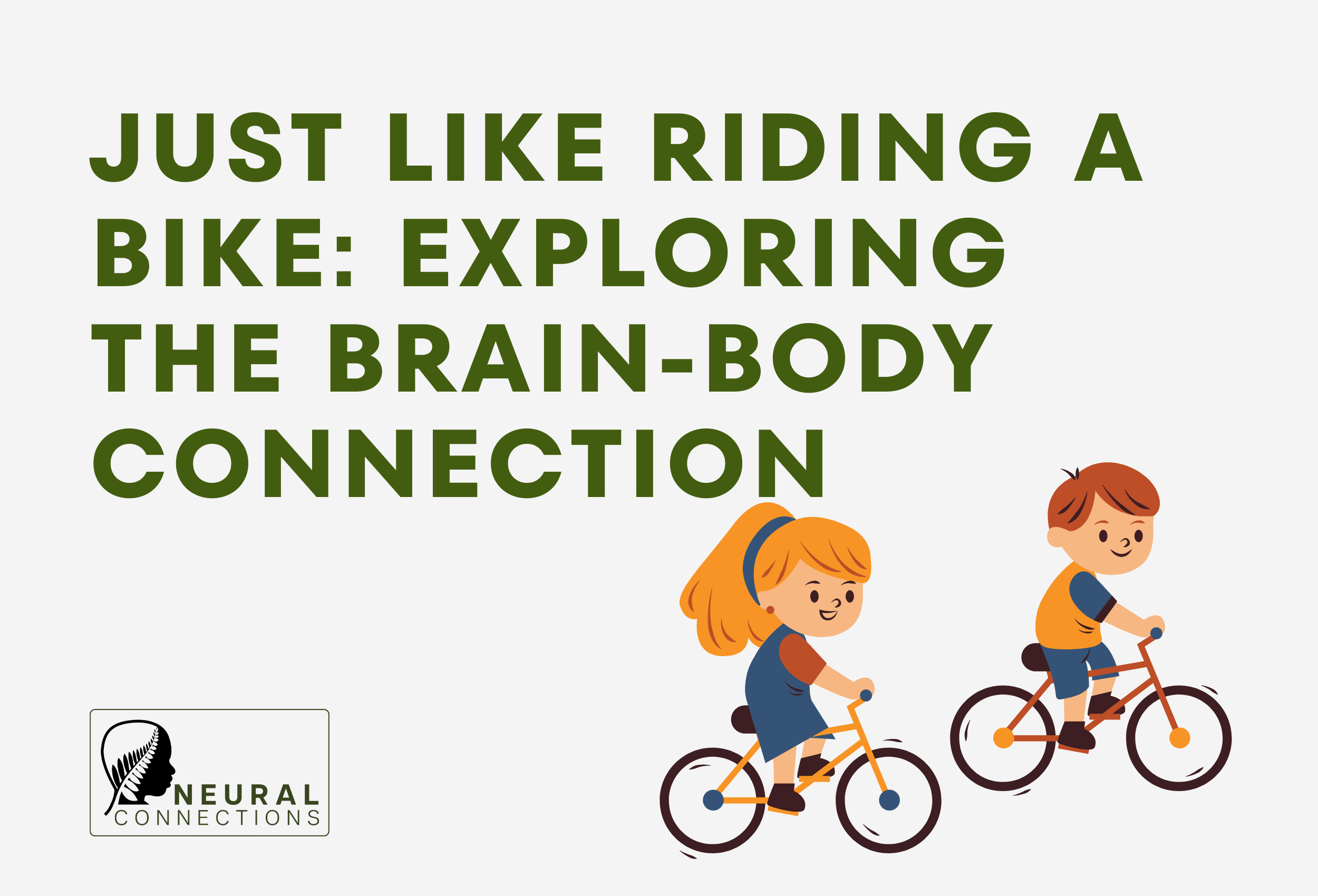Just Like Riding a Bike: Understanding the Brain-Body Connection from Head to Toe
Published: 1 Feb 2024
We zoom in on riding a bike - and all of the different layers that are engaged when doing this fun activity.
Did you know that riding a bike can be a useful diagnostic tool to further understand the brain and body connection?
We often think about riding bikes as an aerobic exercise - working the legs, glutes, hamstrings and thighs but there is so much more to riding a bike than just great exercise and developing a sense of balance.
Riding bikes can be great for understanding the big picture of our brain-body connection. It helps develop a sense of balance, hand-eye coordination, bilateral coordination as well as cross lateral coordination. It can indicate the extent of gross motor development in a child. If a child has difficulty riding a bike, it could potentially indicate that there are retained primary reflexes.
There are so many more layers to riding a bike than just staying upright and moving the bike - we break down all the different layers, from head to toe:
Head control: Head Righting reflexes are necessary to maintain head control and staying upright. This means competent visual skills such as eye teaming, even when you’re moving along on the bike. Without this ability to maintain an upright posture of your head, keeping balance on the bike would be very challenging.
Shoulder stability: Coordination between the shoulders, neck, head, and hands and arms are necessary for this. Several primary reflexes are involved to keep the shoulders appropriately engaged, maintaining head control.
Control of trunk / core and developing midline awareness: A strong trunk is necessary for a strong upper body and upper back. Being in control of the trunk and core keeps a rider upright and balanced on the bike. The brain also needs a competent understanding of the midline (an invisible line that separates the left and right sides of the body) appropriate for riding a bicycle which means coordination between the head, chest/upper back, core/sacrum as well as both hands. Both the right and left side of the body need to work in coordination. This not only helps develop a child’s gross motor skills such as coordination and balance but also plays an important role in attention and working memory, as well as comprehension.
All of these different layers need to be working in unison as the body makes micro adjustments in order to propel the bike forward and for the rider to remain upright. Riding a bike requires key primary reflexes that puts all of these gross motor skills together and helps the brain cross the midline, using both sides of their brain to coordinate smooth, controlled, complex movement.
And if that weren’t enough - riding a bike is something that we likely have to do outdoors - taking us out into nature and regulating the nervous system. So the next time you take your kids out to ride a bike, remember that it’s not just riding a bike - it’s improving the brain-body connection.
At Neural Connections, we focus on offering treatment and protocols to help children regulate their emotions and behaviour better. Schedule a Discovery Call with us today to see if we can help.

